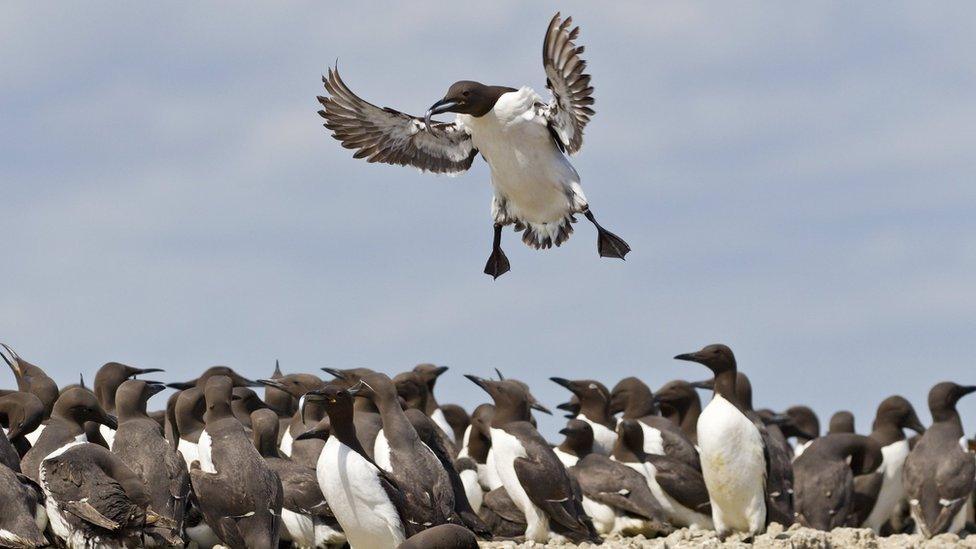Decline in Scotland's seabirds 'slowing'
- Published

A decline in Scotland's seabird numbers has slowed and may have stabilised over the last four years, Scottish Natural Heritage (SNH) has suggested.
Numbers have been falling since the early 1990s.
By last year there were half the number of seabirds breeding as there were in 1986, said SNH.
But drawing on the latest UK Seabird Monitoring Programme, it said 2015 was a "relatively successful year" for producing chicks.
Conservation projects to eradicate non-native species such as brown rats and American mink from Scottish islands have helped to better protect ground-nesting species.
Out of the 12 species assessed for breeding numbers in 2015, common guillemot, common tern, Arctic tern and Sandwich tern have each shown a slight increase since 2011, said SNH.
'Incredibly important'
Arctic skua has suffered the worst declines, with numbers down 76% since 1986.
The breeding stronghold for this species is the Northern Isles, where there has been a fall in the availability of sandeels, which the Arctic skuas get by chasing other species until they drop their catch.
Increased predation by another bird, the great skua, has also been linked to their decline.
Simon Foster, SNH's trends analyst, said: "Scotland is an incredibly important place in the world for seabirds.
"Our seas and marine wildlife are a unique and exciting part of nature and they attract many thousands of people to visit Scotland every year.
"This latest indicator shows the importance of continued long-term monitoring in helping understand what is happening to our seabird populations."